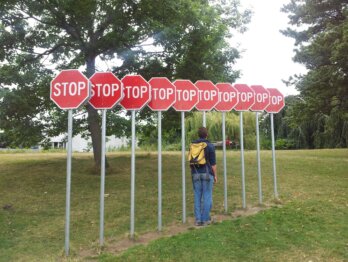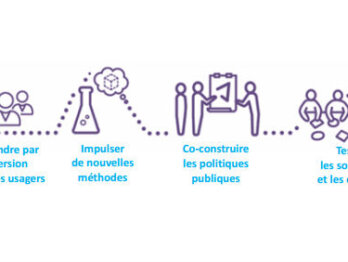Innovation in the Public Sector or Public Innovation?

I had the pleasure of facilitating the penultimate conference session. The following summarises the opening remarks used to set the context for a panel discussion. More importantly, it captures the narrative created by a panel of world renowned thought leaders on innovation in a public sector setting.
Government innovates. We owe to public institutions many of the innovations that have given shape to the societies we live in today. They have given us the nation state and the rule of law. They have created the policies and programs that have contributed to building societal solidarity – from public health and public education systems, to public pension and support programs to assist citizens most in need.
Examples of recent innovations include government interventions to rescue financial institutions which have given new meaning to private risks and collective responsibility or the unprecedented use of monetary policy and quantitative easing to mitigate the impact of the “great recession”.
Governments intervene in the public sphere to achieve public outcomes they judge to be desirable for society. These interventions modify behaviors and influence the way people go about their life. Government actions and decisions change the course of events. Their impact may be felt beyond their country of origin.
Government interventions and public innovation are related concepts. Each intervention transforms the inter-relationship between the public, private and civic spheres. Some will be very successful, others will produce limited impact, and many will produce unintended consequences. State interventions are intended to bring about change in society (Christiansen, 2014). They are aimed at generating solutions to the challenges we are facing as a society ( Mulgan, 2009).
Governments are public innovators. Their actions are experiments in progress. Governments make decisions with imperfect knowledge, no certainty of success and no safety net when the collective interest demands it. Unlike innovators in other areas, government experimentation takes place at the scale of a country as a whole. A particular challenge for government is not to “scale up innovative ideas” but rather to learn to “scale down” to test ideas in practice on a smaller scale in order to improve their likelihood of success before going to national scale.
The legitimacy of government for initiating actions that transform society as a whole is derived from a combination of democratic system and authorising legislation. In our democratic societies, elected officials make decisions in search of solutions to the problems we are facing as a society .These actions are authorised by existing or new legislations .Public innovation does not happen in spite of politics or regulatory requirements; it is enabled by politics and law.
But legitimacy and capacity are two very different things. We are here today because there are reasons to worry about the capacity of the public institutions to adapt to the changing landscape of the world we live in and to fulfill their mission in the future.
People in government today are confronted to issues of increasing complexity. These issues are multidimensional. They do not fit into the silos we have created .They respect no boundaries (Bourgon, 2011, 2014).
Governments must find solution to problems such as climatic change, increasing inequalities, the prospect of low or slow growth over a number of years. They must find ways to reduce frictions in an increasingly disorderly world and to mitigate the impact of 7 billion people on an increasingly fragile biosphere.
The role of government is more challenging than ever. At the same time, public organisations and public institutions have difficulty adapting to the changes brought about by globalisation and the hyper connected world we live in. Governments are frequently left in a reactive position, unable to anticipate emerging issues and to act proactively to reduce risks that will be borne by society as a whole. They are struggling to adapt to a changing relationship with citizens brought about by the digital revolution and IC technologies.
The key questions
What can we do to ensure that the capacity of government to invent solutions will keep pace with the increasing complexity of the challenges we are facing as a society?
What do we need to do to build the innovative capacity of our public organizations to continuously uncover new and better ways to fulfill their mission?
What can we do to ensure that our public institutions and organizations are populated with innovative leaders able to unleash the creative power of the public sector and society?
The Panel Discussion: Innovating in the Public Sector to Serve a Public Purpose
The following does not summarise the panelists’ presentations. Instead, it focusses on the very rich overall narrative that emerged from the group conversation. This is my take away from the panel discussion; as such, it may not represent the individual views of the panellists.
The panel brought together five internationally renowned experts:
- Jorrit de Jong, Harvard Kennedy School of Government, USA;
- Sanford Borins, University of Toronto-Scarborough, Can.;
- Victor Bekkers, Erasmus University, NL.;
- Christian Bason, Danish Design Center, DK; and
- Geoff Mulgan, Nesta, UK.
A Powerful Narrative
Innovation in the public sector is not new. In most country, one can find initiatives aimed at encouraging innovation that spans many years. While these efforts have generated some positive results, they have been insufficient to improve the public perception of the public sector or to build trust in government (Borins,2014 ).
A focus on innovation in government has given much attention to barriers to innovation in a public sector setting (Jensen et al, 2008).The view that public servants are facing insurmountable barriers to innovation may not be entirely substantiated in reality. Research has found that a “perceived” lack of flexibility may be a more powerful barriers to taking initiatives than barriers in laws or the lack of financial resources (de Jong,2014).
A broader view of innovation and a broader perspective are needed to encourage innovation in and by the public sector; one that brings into focus societal and citizen’s perspectives (Bourgon , 2014).
Innovative practices initiated by a public entity serve a public purpose. An explicit public purpose gives meaning to government actions and legitimacy to government decisions. It opens up the potential for co-operation across and beyond government by working with the private sector, civil society, communities and citizens themselves (Voorberg, Bekkers, and Tummers, 2014)
A focus on public innovation helps government rediscover and reconnect to the “public purpose “and the “public space” at the very core of their role in society (Basson ,2010)
Public innovation requires much more than technics. In fact, a diversity of means and approaches are needed to find viable solutions adapted to different public policy challenges, context and circumstances. Public innovation is about solving problems in a manner that promotes the wellbeing of society and generates results of higher value for society. Governments bear a special responsibility to build the innovative capacity of society.
Innovation in government explores how to improve systems and practices, new and better ways of providing public services. They play a useful role.
But, the most significant innovations in government are those that contribute to building the capacity of government for public innovation. This means building the capacity of public organisations and institutions to adapt to changing circumstances and the changing needs of citizens. It means building the capacity of government to invent solutions to the problems we are facing as a society, to generate a better future and improve human conditions.
The OECD Secretariat has launched an important initiative. More than 400 people from across the OECD and beyond have answered their call. Over the course of two days participants have debated four proposed actions. These actions are modest but, taken together they would provide coherence to government actions and convergence across OECD countries. There was a vast consensus among the participants in support of the proposed call for action. But will this be enough to prepare government for the challenges that lay ahead? Will this be enough to prepare public institutions fit for the time?
The next step will require the engagement of political and professional leaders working together. Much more remains to be done, and so … the journey continues.









